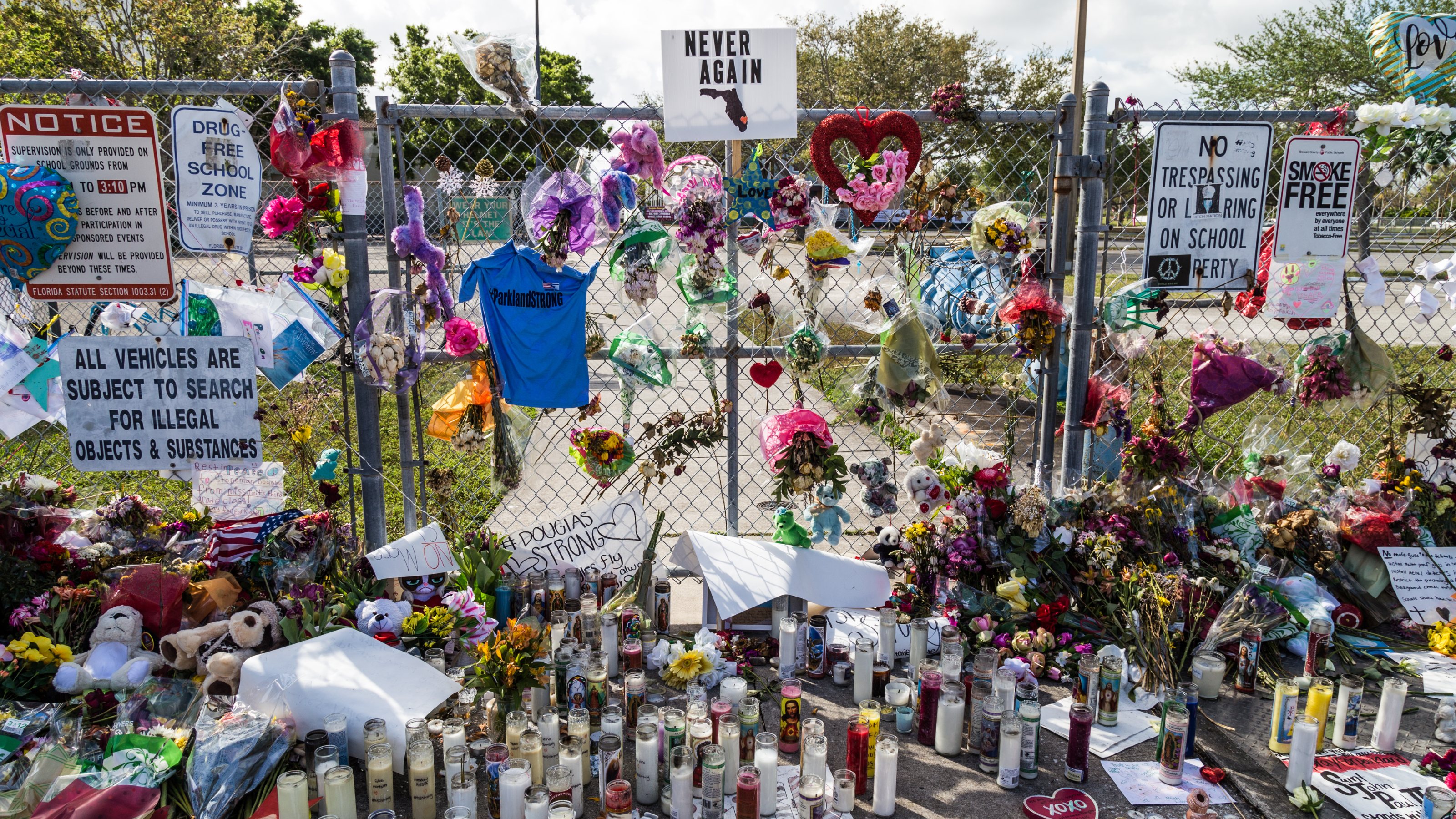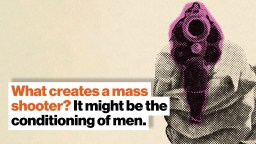25 years since Columbine: We’re closer to decoding mass-shooter psychology

- A mass shooting occurred about every 608 days in America in the 1970s. By the 2010s, the United States experienced a mass shooting approximately every 20 days.
- Toxic views of masculinity, sexual frustration, mental illness, and resentment all wrack the minds of those at risk to carrying out a mass shooting. A severe deficit in theory of mind can enable them to murder.
- To avert mass shootings, experts advise that at-risk individuals' friends and family members must get them the mental help they need and that potentially dangerous persons be denied the weapons necessary to complete their monstrous transformations.
At roughly 11:19 a.m. on April 20, 1999, 18-year-old Eric Harris and 17-year-old Dylan Klebold emerged from their vehicles in the parking lots of Columbine High School. Clad in black trench coats, they started strolling toward the school entrance. Klebold lobbed a pipe bomb. Then the duo brandished guns and started shooting.
Armed with a TEC-9 semi-automatic pistol, two shotguns, a carbine, as well as dozens of pipe bombs and mounds of ammunition in a bag they were lugging, the two were out to kill hundreds of their classmates.
Forty-nine minutes later, Harris and Klebold were dead from self-inflicted gunshot wounds. Before taking their own lives, they murdered 13 people and shot 21 others. The heinous act was the deadliest mass shooting at a K-12 school in U.S. history. At the time, few could conceive that such a horrifying event would ever be repeated, let alone eclipsed.
Then came Virginia Tech (32 slain), Fort Hood (13), Aurora (12), Sandy Hook (27), Pulse Night Club (49), Las Vegas (60), Parkland (17), Tree of Life (11), El Paso (23), Buffalo (10), Uvalde (21), Lewiston (18), and many more. For most Americans, these events don’t require detailed descriptions to evoke vivid memories. We remember the scenes — the panicked people, the police response, the blood-stained aftermath. We remember the victims — shoppers, concertgoers, elementary schoolchildren. And we remember the mass shooters — their names, their looks, their stories.
Most of us would probably rather not have these monsters occupy our thoughts. But our brains, evolved as they did to safeguard us against threats lurking in the shadows, won’t let us forget them. Today, mass shooters are the monsters in the night, the snakes in the grass, the lions in the brush. Worse, they can strike in seemingly safe, mundane places — grocery stores, bowling alleys, schools.
One way to prevent more mass shooters from invading our minds is to understand theirs. By learning what motivated their actions, tortured their thoughts, and disordered their brains, we might just be able to avert catastrophes before they happen. That’s the hope anyway.

A mass shooting occurred about every 608 days in America in the 1970s. By the 2010s, the U.S. experienced a mass shooting approximately every 20 days. Over the 25 years since Columbine, scientists have attempted to delve into the mind of the mass shooter. One of the leaders in this multidisciplinary effort is Adam Lankford, a Professor of Criminology & Criminal Justice at The University of Alabama. He told Big Think there’s “no question” that researchers have made progress, even though it might not seem like it.
“I think my work and that of other scholars and practitioners is already helping to prevent many mass shootings, and has been doing so for years,” he said. “But if there is a greater pool of at-risk people who want to commit mass shootings than in previous decades, it is simultaneously possible that we are preventing more attacks than we did in the past and that the frequency of successful, high-fatality attacks has increased. In other words, we may have gotten better at playing ‘defense,’ but these types of dangerous opponents on ‘offense’ are more common than ever before.”
Before diving into what scientists have learned about the mind of the mass shooter, let’s first define who we’re discussing. U.S. statutes define a mass killing as three or more murders in a single incident. Mass shooters can carry out their deadly deeds publicly or privately. Here, I’ll be focusing on public mass shooters who kill large numbers of people — the worst of the worst.
The distinction is important because, as Lankford told Big Think, there are likely “important differences between those public mass shooters who commit the most lethal attacks and those who commit less lethal ones.” Less deadly mass shootings, often inflicted against loved ones in the home or against acquaintances in anger, tend to be impulsive, the result of romantic upset, rage, or a sudden adverse life situation. These are individuals who lost control and did the unthinkable, and tend to recognize it after the fact.
Then there are the Eric Harrises, the Dylan Klebolds, the Seung-Hui Chos, the Adam Lanzas, and the Nikolas Cruzs. These are the mass shooters who premeditated their deadly acts, who relished in the murderous mayhem they unleashed, and who seemed not to regret it afterward.
Profiling mass shooters
First, to point out the obvious, mass shooting is an almost exclusively male phenomenon, a fact not lost on researchers. Roughly 98% of mass shooters are men and boys. Scientists have theorized that a crisis of masculinity is a latent motivator for mass shooters. They tend to be socially awkward, often incapable of forming meaningful romantic relationships with women. Unable to realize idealized masculinity — physically strong, wealthy, attractive, and athletic — they choose to correct their perceived inadequacies in the worst way imaginable, by putting their dominance and aggression on display for all to see, in a way that others will never forget.
“Qualitative case studies addressing gender and mass shootings overwhelmingly highlight the role of hegemonic masculinity contributing to school and terrorist shootings,” a team of researchers wrote in a 2021 review published in the journal Violence Against Women.
Lankford concurs. In prior research, he and fellow researchers found that sexual frustration factored into the motivations of the mass shooters behind Columbine, Virginia Tech, Sandy Hook, Orlando, Las Vegas, Parkland, and Uvalde.
“There is no one factor that explains the psychology of mass shooters, but sexual frustration seems to be one of the biggest sources of discontent in some perpetrators’ lives,” he told Big Think. “Mass shooters are almost always men, they’re often young, and they are commonly middle class with enough money to buy the basic things one needs in life. So why are they so unhappy — often to the point of becoming suicidal? For some, it’s because of the things they can’t buy or obtain despite their best efforts: long-term sexual satisfaction or a meaningful romantic relationship — or the respect or accomplishments they believe they need to be viewed as important, high-status, and attractive.”
This frustration turns to bitter anger that they externalize, blaming coworkers, society, women, and ethnic groups for their failure and misfortune. As Ronald W. Pies, Professor Emeritus of Psychiatry at SUNY Upstate Medical University, wrote in a 2020 op-ed published in Psychiatric Times, public mass shooters almost always have worldviews shaped by “the 3 Rs”: rage, resentment, and revenge.
Mental illness fans this fiery anger and makes it hard to extinguish. In 2021, a team of psychiatrists reviewed the cases of 50 mass shooters in the U.S. who committed their crimes between 1982 and 2019, finding that around two-thirds of them experienced untreated psychiatric disorders. Roughly half had schizophrenia. In another study, autism spectrum disorder was discovered in about 8% of mass shooters, a rate 10 times higher than what is seen among the general population. Many also suffer from clinical depression. Paranoia and narcissism are also prevalent.
But scientists who’ve studied the matter generally don’t strictly blame mass shootings on mental illness. After all, lots of people suffer from schizophrenia, autism, depression, and other mental health disorders. Exceedingly few of them go on to commit mass violence.
“All of the characteristics of mass shooters are shared by so many others who do not become shooters that simple demographic and clinical depictions of shooters cannot explain who shoots and why and how to predict who might become a shooter,” Harold I. Schwartz, Emeritus Psychiatrist-in-Chief at Harford Healthcare’s Institute of Living, told Big Think.
Following the Sandy Hook Elementary School shooting in 2012, Schwartz was appointed to the Connecticut Governor’s Sandy Hook Advisory Commission to examine all aspects of the shooting and its policy implications. He has since continued to study the minds of mass shooters in the hopes of preventing future calamities.
Theory of mind
In September 2023, Schwartz published an editorial in the Journal of the American Academy of Psychiatry and the Law. He expounded upon an “enabling common denominator” that distinguishes an at-risk individual who goes on to become a mass shooter from one who does not. That quality? An extreme deficit in theory of mind.
“Through theory of mind we are able to imagine that others have their own thoughts and feelings, and we have the capacity to appreciate the mental states of others,” he described. “Extreme deficiencies… can be characterized as a form of solipsism, a condition in which we experience our own thoughts and feelings as the only things that are real. Others are merely cardboard props that support our needs.”
Once an at-risk individual no longer sees the humanity in others, they become capable of transforming into a mass shooter. Schwartz cited neuroscientific research showing that in-person interaction is key to developing and maintaining one’s theory of mind.
“Through face-to-face engagement and mirroring, we connect with the minds and, literally, the hearts of others. When you catch another’s smile and smile yourself, you feel better, as the vagally mediated connection between facial physiognomy and our autonomic system slows heart rate and respiration.”
In Schwartz’s personal quest to delve into the minds of mass shooters after Sandy Hook, he’s found that almost all of them, especially those who target schools, are profoundly isolated socially.
Social isolation may clue us into why there are more mass shooters than there used to be, as Lankford alluded to. Schwartz is “absolutely convinced” that social media and screens are supplanting actual face-to-face interaction for more and more people. So, there are many more individuals lacking in theory of mind, and, by extension, many more people who are capable of mass murder.
“The link between the negative impact of social media and mass shootings is, by nature, anecdotal (it would be impossible to do a controlled trial) but nevertheless, seems obvious,” he told Big Think.
Curbing mass shootings
To help remedy the rise in mass shootings, both Lankford and Schwartz urge increased access to mental health care for troubled individuals. Family and friends also must be proactive in getting them the care that they need.
“It is often the case that shooters signal their intent to someone before they act,” Schwartz told Big Think.
Once receiving mental help, they need to keep up with it. Perpetrators are often in contact with mental health professionals but then discontinue treatment before subsequently carrying out their crimes.
“A noteworthy finding from our research on a small sample of the deadliest public mass shooters was that the median time between the perpetrator’s last mental health contact and his attack date was 1.4 years,” Lankford said.
Beyond mental healthcare, Schwartz also strongly advocates for additional gun restrictions and safety measures, as well as passing red flag laws that enable the police to remove guns from individuals who are reported to be dangerous. Individuals who might become mass shooters must be denied the weapons necessary to complete their monstrous, murderous transformations.
Lankford sees additional research into the mind of the mass shooter as elucidating.
“Every year brings more data (unfortunately) and makes it possible to gain greater understandings. I think we’ll steadily continue to learn more for years to come.”





